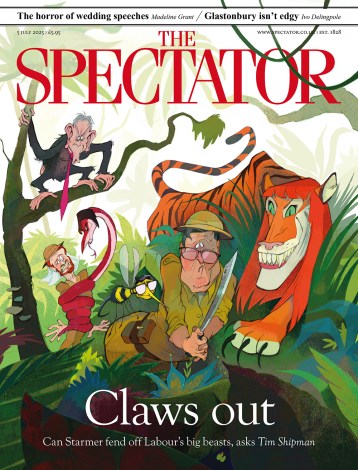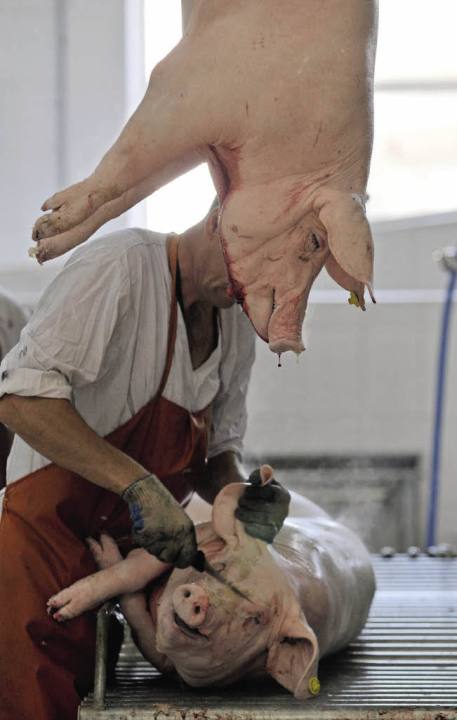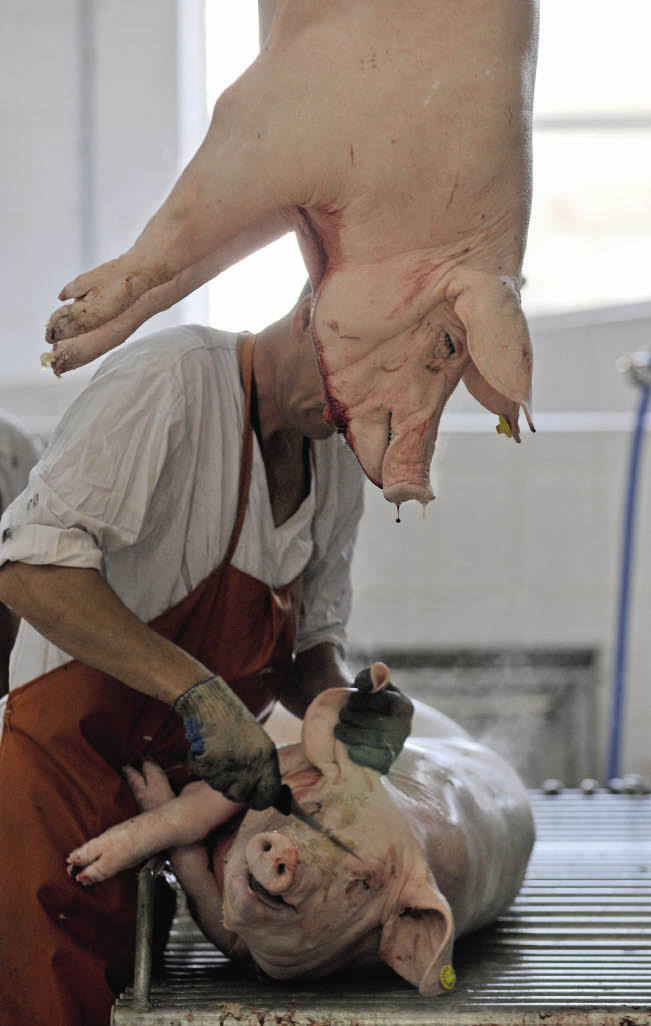In this book, Jonathan Safran Foer, the American novelist, tries to make us think about eating meat. He ate meat, then became a vegetarian, then ate meat again, then got a dog, then started to worry about eating animals, and didn’t stop worrying. This book is the result of what happens if you start to worry about eating animals, which is what most of us do, but then carry on worrying, which is what most of us don’t do. It’s horrifying.
He starts off by thinking about why we don’t eat dogs. Well, we’d hate to do that, wouldn’t we? They’re dogs, for God’s sake. They are ‘companion animals’. We love them, in the same way that the Indians love their cows. But the Indians eat dogs, don’t they? And Koreans eat dogs. And the French eat horses. And we eat pigs, which are just as intelligent as dogs.
By now, he’s demonstrated something important: that a lot of what we do, when we eat meat, depends on creating a sort of mental block about what we’re doing. Culturally, this stuff is deeply embedded, and therefore very hard to dislodge. In the rest of the book, Safran Foer attempts, rather skilfully, to dislodge our mental blocks about eating meat.
Here’s what I remember, having just put the book down. A swirl of blood and guts. A funeral cortège of billions of animals. An undertow of cruelty and sadism. Enormous processing plants full of trapped, often deformed birds. A detail: half of chickens are bred to be good at laying eggs (‘layers’), and half are bred to be plump for the oven (‘broilers’). So what happens to the male chicks from the laying breed? They are selected, thrown into vast vats, and ground up in machines a bit like wood-chippers.
One of the problems with eating meat, says Foer, is that 99 per cent of it is factory farmed. Realistically, this means that almost all the meat we eat comes from animals that have, at the very least, short and uncomfortable lives. Foer gets us to imagine being stuck in a crowded lift. I tried to. There would be no natural light. The people around you would get grumpy. Some would be violent. It would be a lot worse than being in jail. Now try to imagine being in that crowded lift for life.
Foer also tells us about fish. Catching fish, it turns out, is also pretty cruel. True, for wild fish, the cruelty only begins when they are netted or hooked. But their suffocating deaths must be pretty horrible — and this is true for all fish you eat. None are slaughtered humanely. How can they be? Farmed fish, who live in undersea cages, can have miserable lives — bugs colonise the farms and eat their faces, says Foer. And when you eat a fish, lots of other fish have died and been dumped back into the sea, uneaten. This is an environmental disaster.
Now let’s think about slaughter. Foer tries to find out how cows and pigs are killed. In abbatoirs, of course. But what happens in these places? Well, we don’t know, because they don’t allow journalists in there. Foer collects information about slaughter. It’s … well, why didn’t I know this? That’s what I kept thinking. And then I thought, of course, I did know this. I read about it every so often. I just block it out.
Here it is. The cow goes into a box. Then it is supposedly killed by a ‘knocker’ — somebody with a bolt gun. The bolt penetrates the cow’s skull. But it doesn’t always kill the cow. In fact, some people hope that it does not, because a dead cow takes longer to bleed, and a dead cow full of blood is a problem. Next, the cow is shackled and hoisted into the air. Someone cuts the arteries in its neck. Then the skin is peeled from its head. Then the lower legs are amputated. ‘When they do that,’ says one worker, ‘the cattle just go wild, just kicking in every direction.’ Some are still alive, even at this point. Some are pregnant. Some give birth while being killed.
Another thing we have to consider is actual sadism. Most, if not all, people who work in abbatoirs become inured to killing. But some become actively sadistic. A sadist tells us about what happens during the slaughtering of pigs.
The smell of blood makes you aggressive. One time I took my knife — it’s sharp enough — and I sliced off the end of a hog’s nose, just like a piece of bologna. The hog went crazy for a few seconds. Then it just sat there, looking kind of stupid.
I haven’t said much about the environmental problems of farming meat on a large scale. Very briefly, there are vast lagoons of manure, which seep into the soil and get into the rivers. The thing is, meat is getting cheaper and cheaper. Here, in this eloquent and timely book, Foer makes us wonder about this. Is it really so cheap? When you think about the harm it’s doing — to the animals, to us, and to the environment — you might consider the notion that it’s not so cheap, after all.







Comments